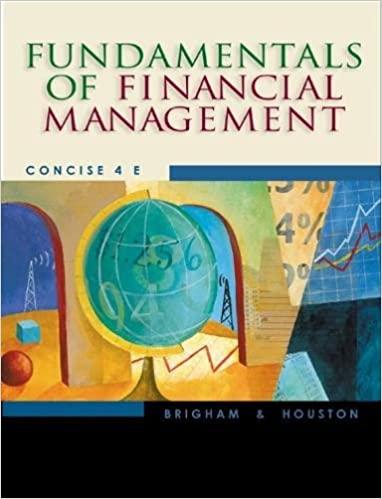Question
To further develop an essay, combine these two drafts together into a single essay. First draft: Food waste has worsened over decades due to consumer
To further develop an essay, combine these two drafts together into a single essay.
First draft:
Food waste has worsened over decades due to consumer habits and technological challenges. Consumers often buy too much food, leading to waste, and lack cooking skills to use ingredients efficiently. Technological issues like inadequate storage and outdated machinery also cause waste. Proper packaging, while beneficial for preserving food, can be environmentally harmful. Thus, sustainable packaging solutions are needed. Addressing food waste requires changing consumer behavior, improving technology, and balancing packaging needs.
Plastic packaging helps preserve food but has environmental drawbacks. It extends the shelf life of perishable items, reducing waste. However, producing and disposing of plastic causes pollution. Balancing food safety with environmental impact is crucial. Strategies like improving recycling, using biodegradable packaging, and developing new solutions can help. Reducing food waste benefits society by improving food security, saving money, and reducing environmental pressure. It is essential to continue exploring ways to minimize food waste and maximize resource use.
Education is key to reducing food waste by teaching proper food handling, storage, and understanding expiration dates. Knowledge about washing hands, separating raw and cooked foods, and cooking at safe temperatures prevents foodborne illnesses and spoilage. Understanding optimal storage conditions extends food shelf life. Clarifying date labels prevents unnecessary waste. Valuing food production efforts can motivate people to reduce waste. Education empowers individuals to make informed choices, promoting a sustainable food system.
Food waste involves many stakeholders, including retailers, consumers, and the food supply chain. Retailers often reject imperfect produce, contributing to waste. Consumers waste food due to overbuying, misunderstanding expiration dates, and poor meal planning. Diseases and natural disasters also disrupt food supply chains, leading to waste. Reducing food waste requires collective effort and targeted strategies across the food supply chain.
Food waste is an ethical, environmental, and economic issue. With millions suffering from hunger, wasting food is morally wrong. Food production uses valuable resources, and wasted food contributes to greenhouse gas emissions. Economically, food waste costs over $1 trillion annually, affecting farmers, consumers, and municipalities. Reducing food waste conserves resources, mitigates climate change, and saves money, promoting a sustainable and equitable food system.
Addressing food waste requires collective efforts from individuals, businesses, and global organizations. Technological innovation can reduce waste, but changing attitudes is equally important. Education raises awareness and provides practical tips. Reducing food waste is an opportunity to create a sustainable, efficient, and fair food system. It can mitigate climate change, conserve resources, and ensure food security. By valuing food and making informed choices, we can make a significant impact on a sustainable and equitable world.
Second draft: One environmental issue we face today is the problem of food waste, which Mara Zarask talksabout in her article, "Fighting Food Waste''. She argues that wasting food not only causes lots of greenhouse gasses, but it also shows how much we buy things unnecessarily. She states, "A lot of food we grow ends up wasted and causes greenhouse gasses''. (Zarask, 2021) This emphasizes how important it is to tackle food waste, as it directly contributes to the climate crisis. Furthermore, Zarask discusses several causes of food waste, such as shopping without a list, lack of cooking skills, and preparing too much food. These highlight that food waste isn't just a big problem with how things are set up, but also with how we behave, suggesting that individual actions can really make a big difference in how big the problem is. Additionally, she provides solutions to reduce food waste, such as spreading awareness, sharing food, and using technology. These solutions back up the idea that we can reduce food waste by working together and coming up with new ways of doing things. Zarask also argues that "wasting a bit of plastic can be better than wasting a lot of food", (Zarask, 2021). This idea makes us think differently about how to tackle food waste. In conclusion, Zarask's article gives a detailed look at the issue of food waste and offers valuable insights that can help us figure out how we can fix it.
In addition to "Fighting Food Waste'', we explore the solutions proposed by Zarask to combat food waste. Zarask emphasizes the role of technology in reducing food waste, stating, "Technology can help us reduce food waste by providing us with tools to better plan our meals, track our food consumption, and even share excess food with others." (Zarask, 2021). This claim highlights the importance of using modern tools to address these environmental issues. For example, there are mobile applications that allow users to plan their meals for the week, ensuring that they only buy the necessary ingredients. thus reducing the likelihood of food waste. Additionally, some apps enable users to share their surplus food with others in their community, promoting a culture of sharing and reducing waste. However, Zarask clarifies that while technology is a powerful tool in the fight against food waste, it is not a complete solution. She argues, "While technology can help, it is not the only solution. We also need to change our attitudes towards food and value it more" (Zarask, 2021) This qualification narrows the focus of the argument, reminding us that technology is just one part of the solution. In summary, Zarask's article suggests that solving food waste requires a combination of technological innovation and a change in how society views food. By using these strategies, we can make significant progress in reducing food waste and its environmental impact.
Step by Step Solution
There are 3 Steps involved in it
Step: 1

Get Instant Access to Expert-Tailored Solutions
See step-by-step solutions with expert insights and AI powered tools for academic success
Step: 2

Step: 3

Ace Your Homework with AI
Get the answers you need in no time with our AI-driven, step-by-step assistance
Get Started


